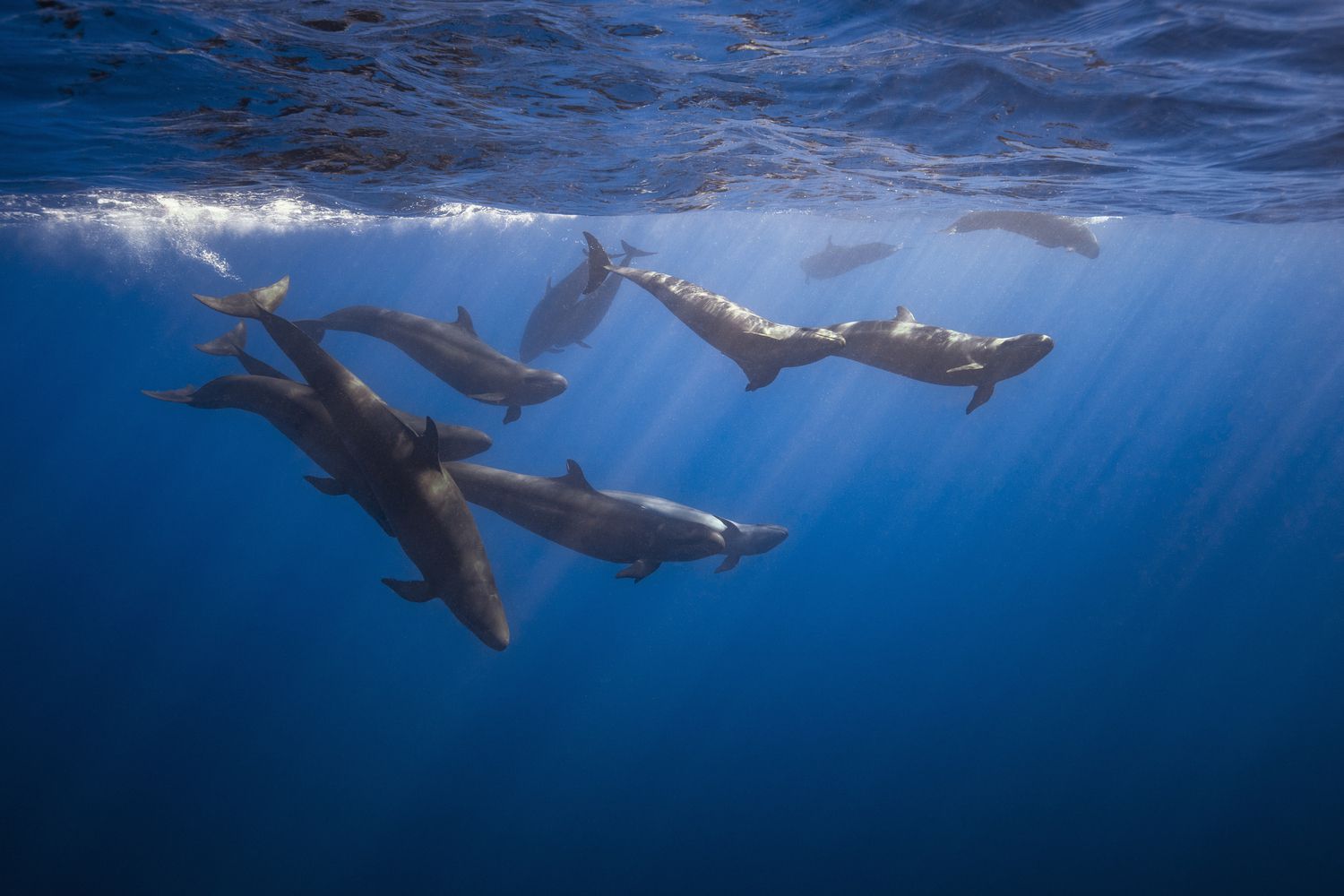FALSE KILLER WHALES !!! (Pseudorca crassidens)

COOL FALSE KILLER WHALE!!!
This is a photograph of a REAL killer whale for context: Killer Whale.
Range and Habitat
While FKW's will typically live in the hawaiian area, they really live anywhere with tropical & subtropical oceans, and deep offshore waters, typically around 15000 feet!
They generally live around Hawaii, but will go up as far as Alaska, and as low as Argentina.

Identifying Features
FKW's are particularly known for having the outline of a Killer Whale, or Orca, and they are a dark greyish/black color with some lighter patches,
Particularly on its ventral side. It has a conical head with no beak, and its pectoral fins and flippers are formed in the shape of an S.
FKW's grow to be from 16-20 feet long, weighing in at near a ton and a half!

Here is a drawing I made whilst writing notes on the false killer whale.
I couldnt quite get the tired look in its eye as I wanted, but yes they do ACTUALLY look like this
Adaptations
FKW's will hunt in large packs of cetaceans, obviously with other FKW's but they will also hunt with other cetaceans (particularly bottlenose dolphins)
They are very friendly, to the point they will share prey with divers watching them!
Physically FKW's have sharp, strong teeth, will click like dolphins do for echolocation, and can be underwater for up to 18 minutes.
Diet and Hunting
FKS's mainly hunt for squid and fish, and will hunt in packs upwards of 40 cetaceans. They often share food with others in their pack.
FKW's also commonly throw their food into the air to eat them, similar to how killer whales throw their prey in the air.
Another interesting thing about their hunting patterns, is that FKW's will hunt other species of cetaceans, like dolphins and sperm whales, but dont eat them
Scientists think it may be a tactic to leave more food for themselves.

Breeding
Male FKW's mature from 16-19 whereas female FKW's mature much much sooner, usually around 8 years!
Females will give birth to just 1 calf in her pregnancy. The general breeding season is from december to january, but there is a peak in march aswell.
There isnt much information on where specifically they mate, give birth, or any rituals they might preform, but we DO know that they are polygandrous promiscuous.
(Mate with multiple partners with no emotional connection to previous partners.)

Threats and Predators
Being such large animals, they actually dont have many predators, with the small exception of some sharks and killer whales.
Despite a lack of a large number of predators, they do however, have a list of threats same as any other species.
One of these threats is their use of depredation from fishing ships. They steal fish off of hooks, which both puts them at risk of being caught and reeled in, but also seen as a target by fishing ships.
Just like any other species of animal, they also suffer from pollution, mostly chemicals dumped into the ocean.
They also suffer from the special threat of genetic bottlenose, as there isnt enough of them to prevent genetic disease.
Conservation
Whilst its hard to really conserve a species that doesnt really HAVE a huge threat that is effecting it, aside from maybe just pollution, there are a few things that help in aiding the FKW.
The US has banned a majority of the harmful chemicals that affect the FKW, and the NOAA has a few plans in act that help with beached FKW's and teaching people on how to avoid bycatching.
Sources




